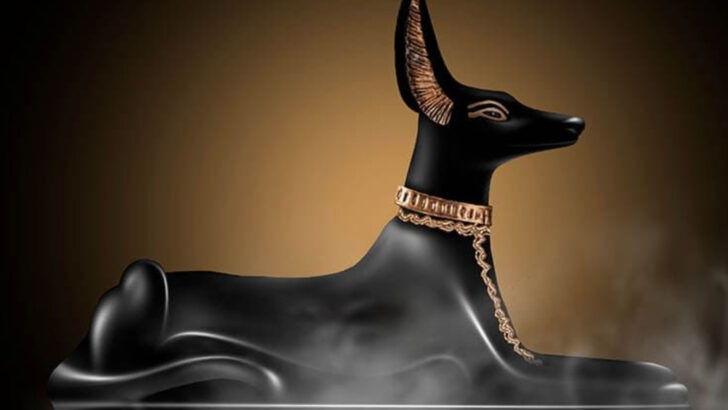Dogs weren’t just animals in ancient Egypt — they were legends in fur coats.
Loyal guardians, divine companions, and sometimes even living symbols of gods, these dogs had a status most pets today can only dream of.
From palace halls to dusty streets, dogs played roles that went way beyond fetch and belly rubs. They hunted, protected, and inspired myths that echo through history.
Ready to meet the dogs who walked alongside pharaohs and prowled through temples?
These 15 jaw-dropping facts will flip your view of dogs — from cuddly companions to sacred sidekicks of one of the world’s greatest civilizations.
Guardians of the Afterlife
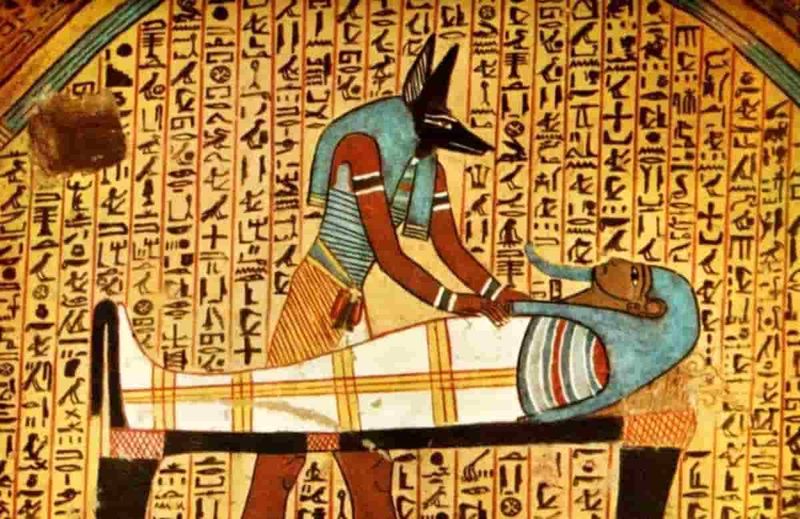
Anubis, often depicted as a jackal or a man with a jackal’s head, was the god of mummification and the afterlife.
Dogs were associated with Anubis due to their protective nature and keen senses. Ancient Egyptians believed that dogs could guide souls to the afterlife, serving as guardians of the deceased. In tomb paintings, canines are frequently shown accompanying Anubis, symbolizing their role as protectors.
The connection between Anubis and dogs highlighted the cultural belief in the mystical abilities of these animals. This reverence for dogs underscored their integral role in spiritual rituals and beliefs.
Companions in Life
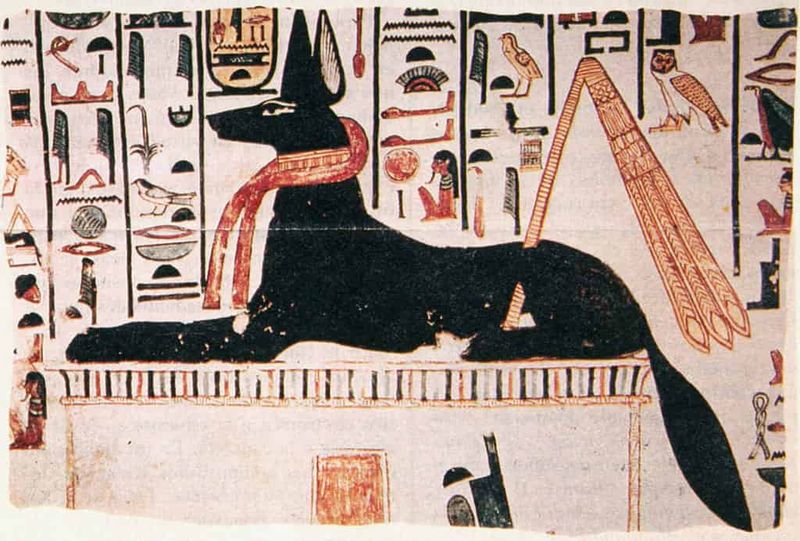
Dogs were cherished companions in ancient Egyptian households, valued for both their companionship and their practical roles.
They were often seen in domestic settings, lounging with family members or participating in daily activities. Canines were integral to family life, offering loyalty and protection. Ancient Egyptian art frequently portrays dogs in homes, reflecting their status as beloved family members.
These depictions illustrate the bond between humans and dogs, underscoring their importance in personal and domestic spheres. The affection for dogs was evident in the care and attention they received from their human counterparts.
Symbols of Status
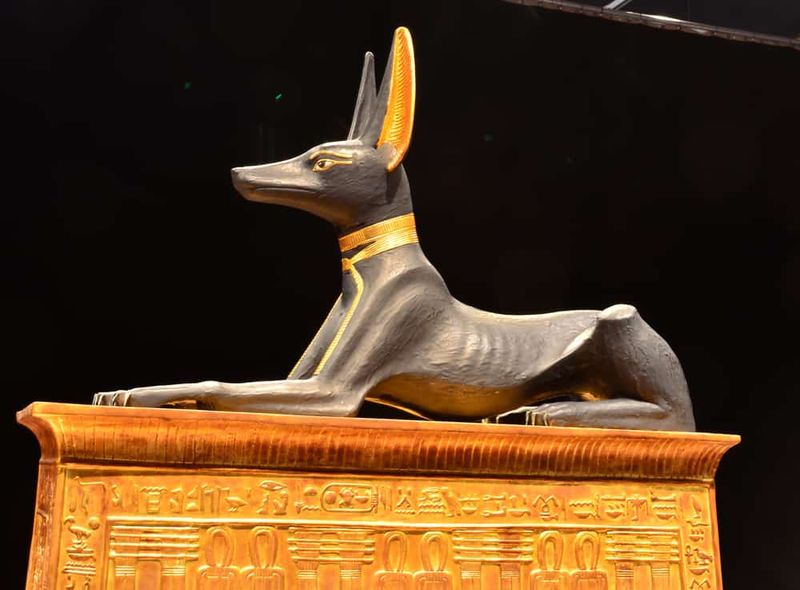
In ancient Egypt, dogs were symbols of status and wealth. Noble families often owned dogs that were pampered and adorned with fine jewelry.
The breeds kept by the elite were usually larger and more imposing, reflecting their owner’s social standing. These dogs were not only companions but also status symbols, showcased in art and literature. Their presence in elite households highlighted the connection between wealth and the ownership of prized animals.
Dogs were depicted alongside their noble masters, emphasizing their role as both companions and indicators of prestige.
Hunters and Protectors
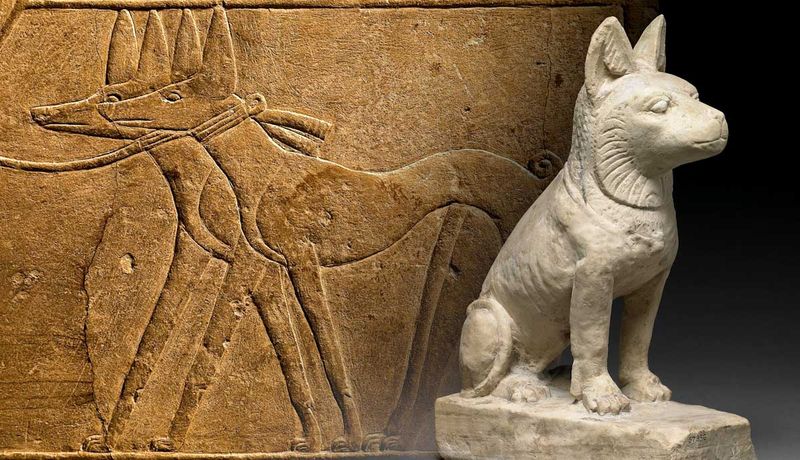
Dogs played a vital role as hunters and protectors in ancient Egypt. They were often utilized in hunting expeditions, particularly for waterfowl and small game near the Nile.
Their keen senses and agility made them indispensable in tracking and capturing prey. Beyond hunting, dogs provided protection to their human companions, alerting them to danger. The dual role of dogs as both hunters and guardians made them invaluable assets.
This partnership between humans and dogs in hunting and safeguarding showcases the practical and mutual benefits of this ancient relationship.
Sacred Burial Practices
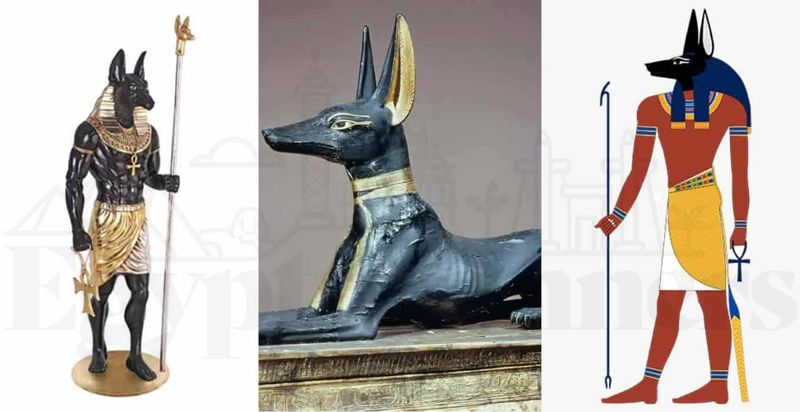
Dogs were not only companions in life but also in death. Ancient Egyptians practiced mummification for dogs, believing in their spiritual significance.
The burial of dogs was conducted with care, often involving elaborate rituals. Canines were interred in specially designated cemeteries, reflecting their esteemed status. The practice of mummifying dogs underscored the belief in their eternal companionship and spiritual roles.
These burial practices highlight the deep respect and reverence for dogs, treating them with the same honor as human family members. This cultural tradition illustrates the profound bond between dogs and their owners.
Canine Deities
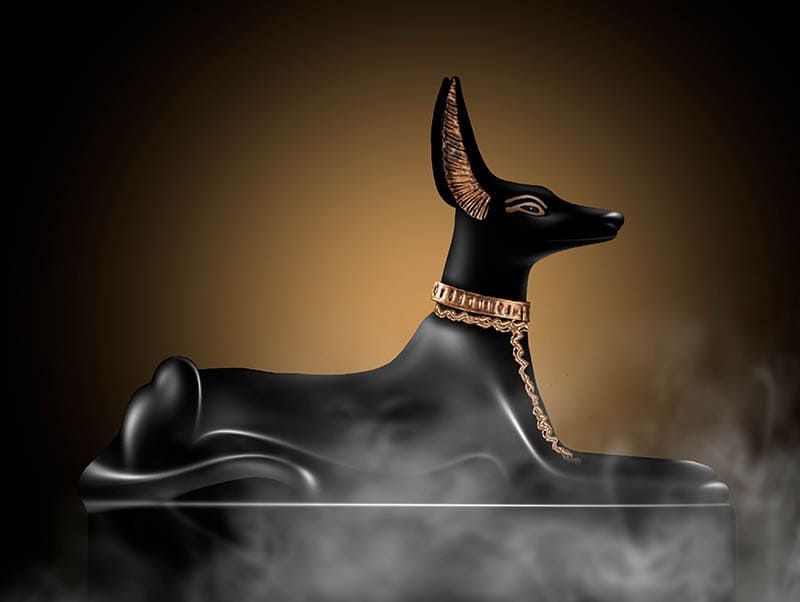
Wepwawet, another deity associated with dogs, was worshiped as a god of war and funerary rites. Depicted with a dog or wolf form, Wepwawet’s name translates to “Opener of the Ways.”
He was believed to guide souls through the afterlife and assist in battles. Dogs, through their connection to Wepwawet, were seen as sacred animals with protective powers.
This association highlights the spiritual and cultural importance of dogs in ancient Egyptian mythology. The reverence for canine deities like Wepwawet underscores the symbolic and protective attributes ascribed to dogs.
Healing and Medicine
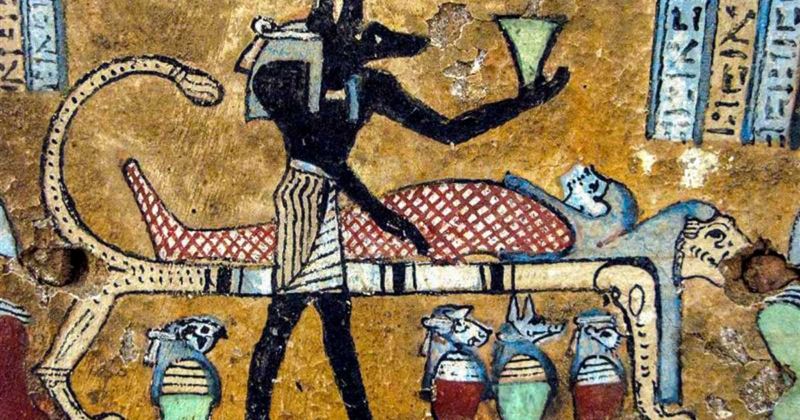
Dogs were thought to possess healing qualities in ancient Egypt. They were sometimes involved in medical practices, providing comfort and perceived therapeutic benefits.
Ancient texts suggest that the presence of dogs was believed to aid in healing and recovery. Healers might use dogs to soothe patients, leveraging their calming presence. This belief in the healing power of dogs highlights the holistic approach to health in ancient Egyptian culture.
The integration of dogs into medical practices reflects their multifaceted roles, extending beyond companionship to include spiritual and physical well-being.
Artistic Inspiration
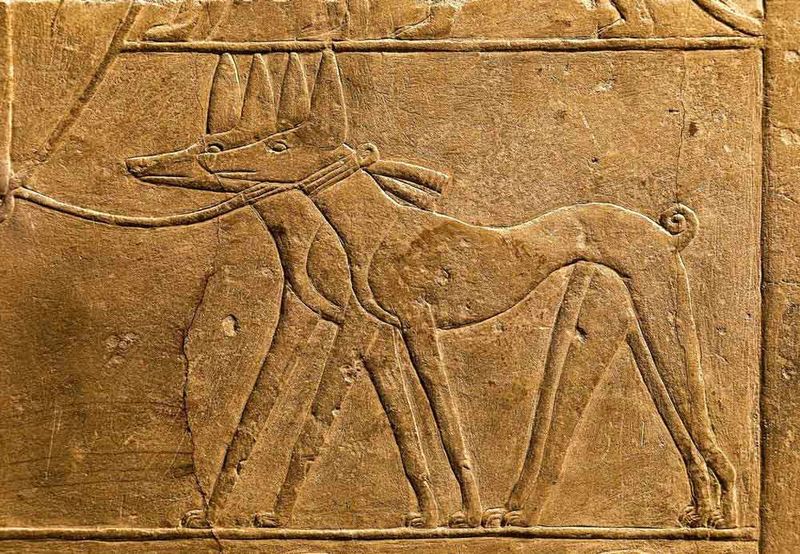
Dogs served as artistic muses for many ancient Egyptian artists. They were frequently depicted in various artistic forms, such as sculptures, paintings, and pottery.
These art pieces reflect the admiration and significance of dogs in society. Artistic representations often captured the essence of dogs, highlighting their aesthetic and symbolic value.
The frequent portrayal of dogs in art underscores their cultural prominence, serving as symbols of loyalty and protection. Artists celebrated dogs through their work, contributing to the enduring legacy of these animals in ancient Egyptian culture.
Names and Titles
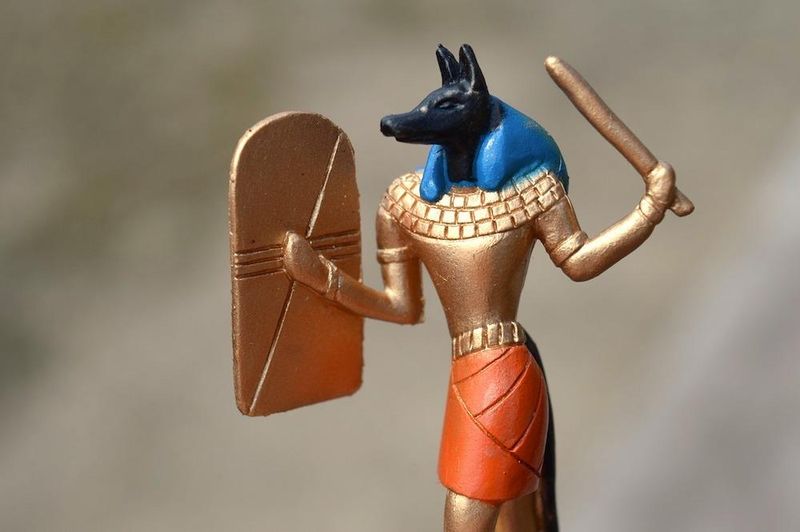
Dogs in ancient Egypt were often given names and titles, reflecting their status and the affection of their owners. Names were carefully chosen, sometimes based on the dog’s characteristics or roles.
Titles could include terms of endearment or references to the dog’s abilities. This practice of naming and titling dogs signifies the personal and cultural bonds between humans and canines.
The names and titles bestowed upon dogs highlight the emotional connections and social importance of these animals. Ancient texts and artifacts reveal the thoughtful consideration given to the naming of dogs.
Mythical Associations
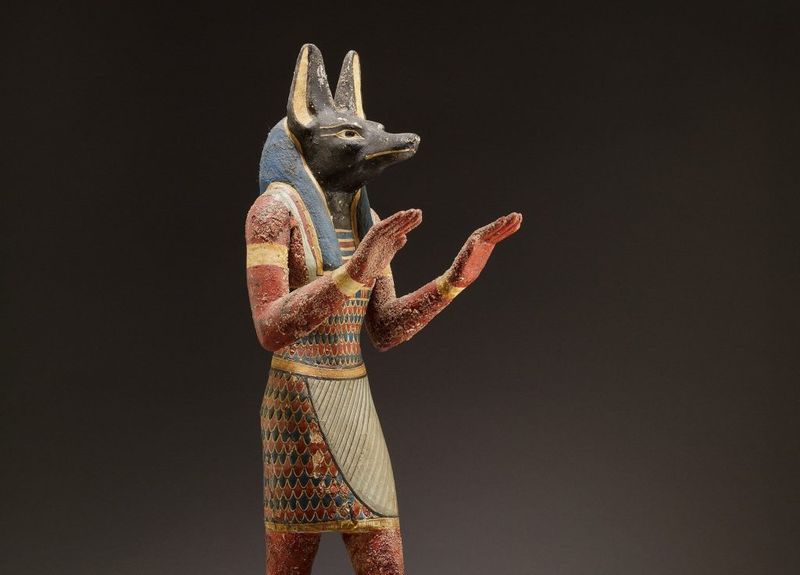
Dogs were intertwined with mythology and cosmic symbolism in ancient Egypt. They were often associated with celestial events and deities.
Myths frequently featured dogs as companions to gods, embodying traits such as loyalty and vigilance. These mythical associations elevated the status of dogs, linking them to divine and supernatural realms.
The portrayal of dogs in mythological contexts underscores their spiritual significance and cultural esteem. This connection to mythology highlights the diverse roles dogs played in ancient Egyptian belief systems, enriching their historical narrative.
Cultural Festivals
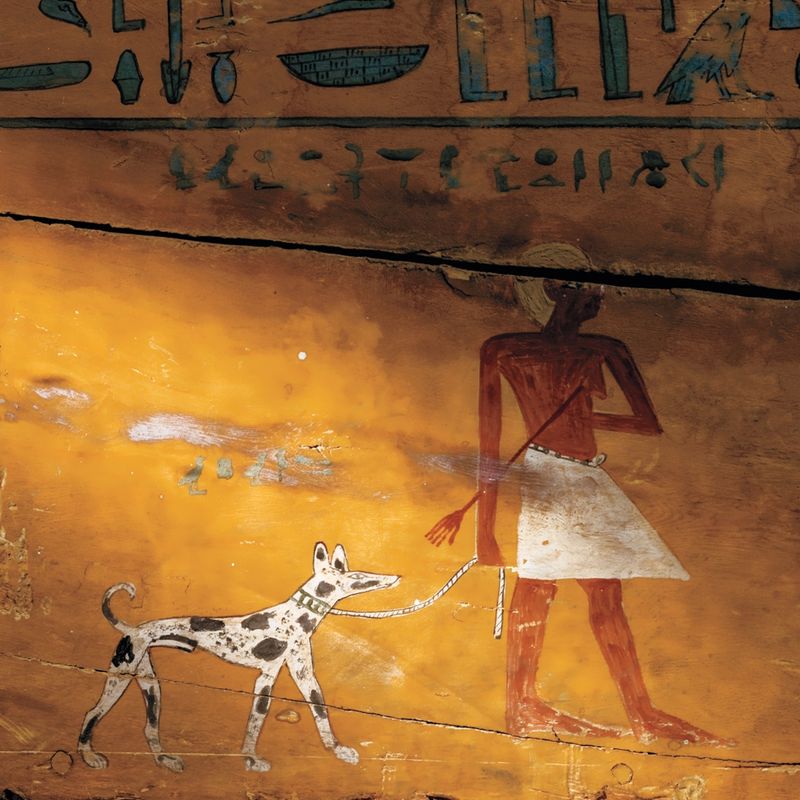
Dogs were part of various cultural festivals and rituals in ancient Egypt. They participated in celebrations that honored deities and marked significant events.
These festivals often included processions, where dogs were adorned and paraded alongside humans. Their involvement in festivals highlights the communal and ceremonial roles dogs played in society. The festive inclusion of dogs underscores their joyous and honored presence in cultural traditions.
These celebrations reflect the harmonious and revered relationship between humans and dogs, showcasing their integral position in ancient Egyptian life and festivities.
Famous Breeds
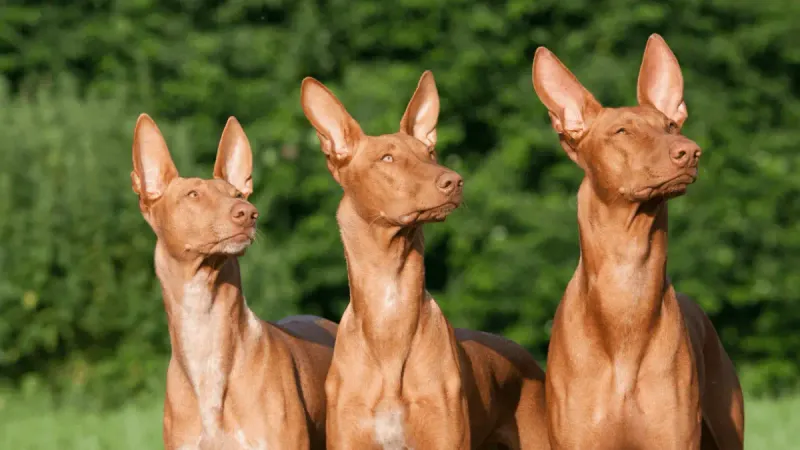
Certain dog breeds were particularly favored in ancient Egypt, such as the Egyptian Greyhound. Known for their speed and elegance, these dogs were esteemed for hunting and companionship.
The distinct physical characteristics of these breeds made them recognizable and valued. Ancient Egyptian art and literature often feature these dogs, highlighting their prized attributes. The prominence of certain breeds in ancient Egypt emphasizes the cultural appreciation for their unique qualities.
These favored breeds were celebrated for their contributions to society, from hunting prowess to their role as cherished companions.
Educational Roles
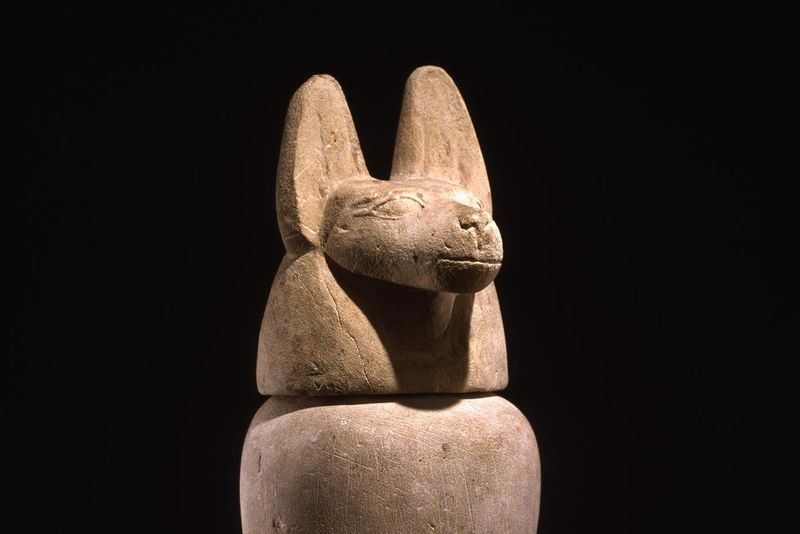
Dogs sometimes played educational roles in ancient Egyptian society. They were present in learning environments, providing companionship and inspiration.
The presence of dogs in educational settings symbolized wisdom and the pursuit of knowledge. Their involvement in teaching and learning highlights the multifaceted roles dogs held within society. The educational presence of dogs reflects the broader cultural respect for animals and their perceived intelligence.
This integration of dogs in educational contexts underscores their significance beyond mere companionship, illustrating their broader contributions to ancient Egyptian culture.
Eternal Companions

The belief in dogs as eternal companions was deeply rooted in ancient Egyptian culture. Dogs were thought to accompany their owners in the afterlife, providing continuity and companionship beyond death.
This concept is reflected in tomb paintings, where dogs are shown alongside their human companions in serene settings. The depiction of dogs in the afterlife underscores their spiritual and emotional significance.
This enduring bond between dogs and humans highlights the profound connection and loyalty that transcended mortal life. The portrayal of dogs as eternal companions reflects the timeless nature of their relationship with humans.
Guardians of Artifacts
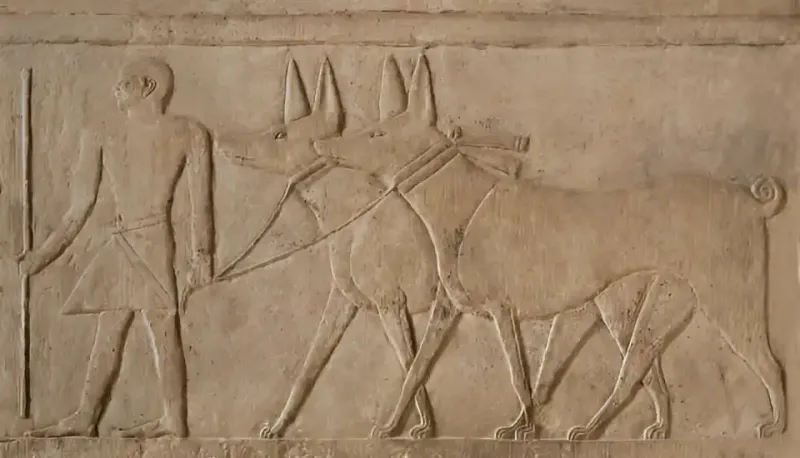
Dogs were sometimes tasked with guarding valuable artifacts and treasures in ancient Egypt. Their keen senses and protective instincts made them ideal guardians of precious items.
These canine protectors were often depicted in art, showcasing their role in safeguarding cultural heritage. The presence of dogs among artifacts underscores their trusted position in society. This role as guardians highlights the respect and reliance placed on dogs to protect important possessions.
The depiction of dogs as steadfast guardians enriches their historical narrative, emphasizing their multifaceted contributions to ancient Egyptian culture.

